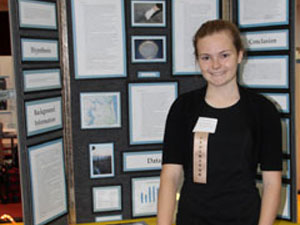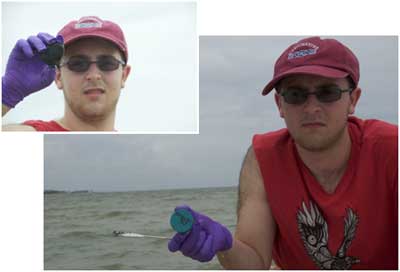MAKING CONNECTIONS
Stories of students connecting with Deep-C science and scientists
An important outcome of the 2010 Deepwater Horizon oil spill has been its value as a teachable event. It has given rise to new and expanded research into the impacts of oil, dispersed oil, and dispersant on the ecosystems of the Gulf of Mexico. It has also focused attention on the importance and relevance of science, technology, engineering and math (STEM). Students interested in STEM have had the chance to investigate topics that intrigue them – through science projects, volunteer work, and internships. Those students who have reached out to Deep-C scientists have tapped a valuable resource. From answering questions by phone or email, to sometimes even agreeing to host a student in their research environment, many Deep-C scientists devote time to work with middle and high school students – providing them insight into the scientific process and enabling them to develop technical and analytical skills.
High School Student Gets SLIMED
|
|
-- Posted September 3, 2013 --
Madison Fish, a 15-year-old International Baccalaureate student at Rutherford High School in Panama City, Florida, has spent a significant amount of time dealing with slime. Hagfish slime that is.
Hagfish use slime as a defense mechanism against predators, releasing enormous quantities to ward off attacks. The “slime” contains protein-based fibers that resemble spider silk in their strength and durability, so you can imagine the effect on the gills of a hapless predator. The fibers’ remarkable strength also makes them excellent candidates for biomedical use. One use that comes to mind is as a substitute for suture materials that cause allergic reactions in patients. Further, if the protein structure of the fibers could be determined, it would facilitate synthesis of the fibers, increase the opportunity for developing other commercial applications, and release hagfish from the potential threat of overharvesting1. The first question, however, is where do you get hagfish slime?
Enter FSU Coastal and Marine Laboratory scientists, Dr. Chip Cotton and Cheston Peterson. After learning of Madison’s needs, they knew they could help by providing hagfish that they collected during a Deep-C Consortium research cruise in the Gulf of Mexico onboard the RV Apalachee.
With slime in hand, Madison attacked the primary question of her research, which was, how does one extract fibers from slime? She decided to test a “gel-spinning method” that is commonly used in the production of medical fibers and biotextiles. This method requires solubilizing, or breaking down, the fibers into a gel using formic acid (the chemical responsible for the “sting” of ant venom), and spinning the gel in a centrifuge at high speed to separate the liquid from the fibers and leaving the fibers in the form of a pellet. Once this “pellet” of isolated fibers dries, analysis of its physical and chemical properties can occur. “That”, said Madison, “was for someone else to figure out”. For Madison, being able to repeatedly extract 98% of the fibers contained in the slime was more than enough to consider her project a great success.
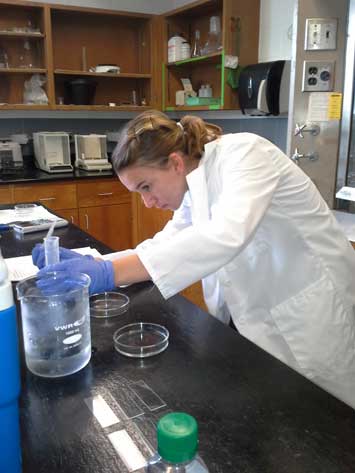 Madison’s success with gel-spinning earned her high marks in three different science fairs that she entered: 1st place in the Three Rivers Regional Science and Engineering Fair’s biological category (Panama City, Florida), a merit award at the State Science and Engineering Fair of Florida (Lakeland, Florida), and a bronze medal at the International Sustainable World Energy Engineering Environment (I-SWEEEP) International Project Olympiad in the environmental category (Houston, Texas).
Madison’s success with gel-spinning earned her high marks in three different science fairs that she entered: 1st place in the Three Rivers Regional Science and Engineering Fair’s biological category (Panama City, Florida), a merit award at the State Science and Engineering Fair of Florida (Lakeland, Florida), and a bronze medal at the International Sustainable World Energy Engineering Environment (I-SWEEEP) International Project Olympiad in the environmental category (Houston, Texas).
She is not stopping there! Madison is working on a new research project focusing on computer software aiding biomedical research. She views these research projects as opportunities to explore future career options.
Congratulations, Madison, on all your hard work and accomplishments! Your diligence and pleasant disposition made it very enjoyable to support your research at the lab. Good luck in your future endeavors! A special thank you to the Gulf of Mexico Research Initiative’s Deep-C Consortium for providing support to collect the hagfish samples.
1This brings up a number of questions about commercial use of this species. As animals that live in deep, dark, cold environments, can they survive in captivity? Can individual hagfish in captivity withstand repeated sliming? If farm-raising hagfish is not an option, Can hagfish populations survive prolonged, intense harvesting? While the answers to these questions are unknown, very crude estimates for the number of hagfish needed for commercial fiber production suggest that such harvest is unsustainable.
Story Source: The above story is based on content provided by the FSU Coastal and Marine Laboratory. Note: Materials edited for content and length.
|
|
Dr. Chip Cotton's research efforts are broadly applied to studies of life history and ecology for a variety of fishes. Since some of the species he studies are rare or poorly described, several taxonomic investigations have naturally co-evolved with this work. His research has focused on deep-water species, as well as studies of estuarine and marine fishes important to the ecology and economy of the Gulf of Mexico (e.g. groupers, drums, and coastal elasmobranchs). Typical research products include characterizing and quantifying life histories, taxonomic revisions, morphometric analyses, habitat delineation and determining movement patterns. These data can be incorporated into local or regional fisheries management and ecosystem-based models for a range of ecosystems.
The Deep-C consortium is a long-term, interdisciplinary study investigating the environmental consequences of petroleum hydrocarbon release in the deep Gulf of Mexico on living marine resources and ecosystem health. The consortium focuses on the geomorphologic, hydrologic, and biogeochemical settings that influence the distribution and fate of the oil and dispersants released during the Deepwater Horizon accident, and is using the resulting data for model studies that support improved responses to possible future incidents.
More stories about student collaborations:
Deep-C was a four-year, interdisciplinary study of deep sea to coast connectivity in the northeastern Gulf of Mexico.Deep-C is no longer an active research project. The information on this website is for historical reference purposes only.
Home | About Us | Research Areas | Data Center | News & Multimedia | Education & Outreach
© Deep-C Consortium. All Rights Reserved.
This research was made possible by a grant fromThe Gulf of Mexico Research Initiative (GoMRI).
Copyright | Disclaimer | Privacy Policy

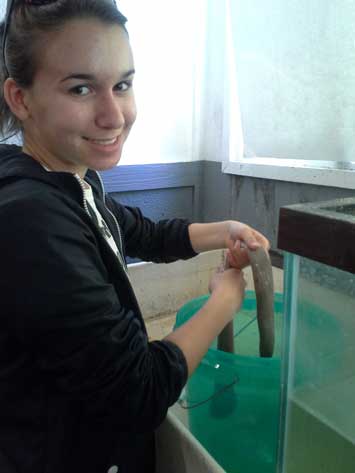
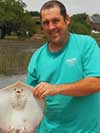 Deep-C researcher
Deep-C researcher 